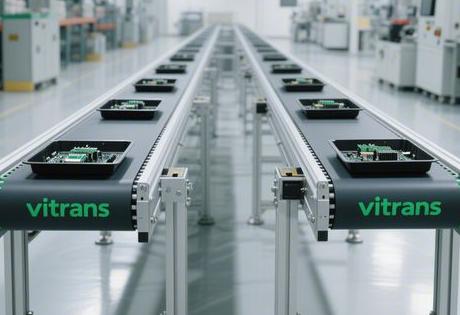In the bulk material conveying system, the transfer point drop control is the core link to determine the precision of conveyor belt operation. Belt deflection caused by material impact not only triggers equipment wear and tear, increased energy consumption, but also causes material contamination and production interruption. This article will focus on the three-dimensional Q&A matrix, in-depth analysis of transfer point optimisation of the technical logic and practical solutions.

I. Fundamental dimensions: the nature and impact mechanisms of drop feed optimisation
1. Why does a deviation of the drop point cause the conveyor belt to run out of alignment?
When the material impacts the conveyor belt vertically, a lateral force (Fc) perpendicular to the running direction will be generated. If the drop point deviates from the centre line of the conveyor belt, the material is unevenly distributed in the cross-section, and its horizontal force (Fy) will push the belt to deviate to the side with less force. For example, in the vertical reproduction condition, when the centre of the drop material is offset from the centre line of the conveyor belt by more than 50mm, the risk of runaway is increased by 80%.

2. How does the form of reproduction affect accuracy risk?
- Vertical reprints: The material produces direct lateral impact on the conveyor belt, and the material flow is difficult to be centred, and the probability of deflection is significantly higher than that of straight-line transfer.
- Linear reproduction: the material falling direction is the same as the running direction of the conveyor belt, but still need to control the falling speed difference (ideal state: material falling speed ≈ belt speed) to reduce the dynamic friction wear.
II. Scenario dimension: the engineering realisation path for precise material dropout
1. How to force centres when space is limited?
- Golden Ratio ChuteThe width of the inner wall of the guide trough is 2/3 of the width of the conveyor belt (e.g. 1000mm belt width with 660mm trough), which effectively restricts the distribution of materials.
- Adjustable baffle technologyDynamic correction of material flow trajectory by means of angle-adjustable side baffles: 70% reduction in deflection rate after application in a coking plant.
- Accumulator Chute Design: The stepped structure allows the block material to form a buffer ramp from the pile, synchronising the reduction of impact forces with lateral spreading (Fig. 1).
2. Kinetic energy solution for high drop conditions
- Chute inclination control: Powder material inclination angle ≥ 60 ° anti-clogging, block material to take 45 ° buffer bursts
- Secondary buffer systemWhen the drop is more than 1.5 times the diameter of the drum, add a rotary unloading device + adjustable buffer chute, so that the final speed of the material is reduced to 1/3 of the belt speed.
- Flexible Roller Set Configuration: 3 sets of buffer rollers installed under the transfer point to absorb shock vibrations.
III. Addressing the dimensions: consequences of loss of control and intelligent corrective technologies
1. Unoptimised chain of interlocking losses
| failing link | direct consequence | hidden costs |
|---|---|---|
| impact of falling material | Belt edge tear | Increased frequency of replacement 40% |
| Continuing to run off the rails | Roller bearings overheated and damaged | Single downtime loss ≥ 8 hours |
| material spilling | Dust pollution (PM10 exceeding 300%) | Environmental fines + rising cleaning costs 35% |
2. Technical breakthroughs in dynamic bias control systems
- Pressure sensing closed loop control: Install symmetrical pressure sensors on both sides of the conveyor belt to detect the material distribution status in real time. When the material drop point deviation triggers the unilateral pressure exceeding the standard, the system automatically drives the electric actuator to adjust the position of the material drop cylinder, realising ±5mm level positioning accuracy.
- Self-learning bias correction algorithm: Combined with historical runout data to predict the amount of adjustment, a mine after the application of maintenance man-hours reduced by 60%
IV. Future evolution: from reactive amendments to active defence
The current technological focus has shifted from post-runaway repairs to preventive control:
- digital twin preview: Simulate the trajectory of material with different material characteristics (particle size/water content) through DEM discrete element simulation to predict the risk point of runout.
- Laser alignment + AI visionDual system real-time monitoring of the belt edge position, automatically triggering the centring roller set when the offset is >20mm.
After upgrading the intelligent transfer system in a cement plant, the life of the conveyor belt was extended from 6 months to 22 months, and the annual maintenance cost was reduced by 1.2 million RMB. When the materials accurately converge into the centre line of the conveyor belt like a stream, what we witnessed is not only the victory of technology, but also the taming of chaotic forces by the beauty of industrial precision.













